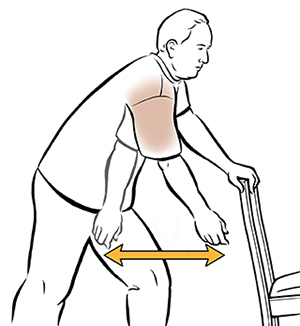At home, your goal is to return safely and comfortably to your normal activities. To get the most from your new shoulder, you need to take an active role in your recovery. Be sure to follow your exercise program and see your surgeon for checkups.
The first months
Remember that it takes 3 to 6 months, or possibly more, for your shoulder to heal. Recovery from a broken bone may take longer. You will have some pain and swelling at first. Your healthcare provider may give you medicine. They may suggest you use an ice pack. You may also keep using your sling. Your exercise program will involve more active use of your arm and shoulder. It’s vital to do your exercises as advised to get back the greatest strength, flexibility, and movement.

Checking your progress
Your sutures (stitches) or staples will most likely be removed 10 to 14 days after surgery. Your surgeon will check the range of motion and strength in your shoulder for the first year after surgery. They may see you once a year after that. Be sure to keep all your appointments and ask any questions you have. Your healthcare provider may also recommend that you take antibiotics before you have dental work or surgery. You may be given a card that says you have a prosthesis. Use this card at security gates with metal detectors.
Call your healthcare provider if you have
-
Increased pain, numbness, or tingling
-
Drainage, redness, or swelling around the incision
-
A fever of 100.4°F (38°C) or higher, or as directed by your healthcare provider
-
Chills
© 2000-2025 The StayWell Company, LLC. All rights reserved. This information is not intended as a substitute for professional medical care. Always follow your healthcare professional's instructions.


